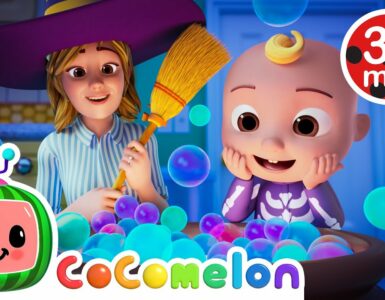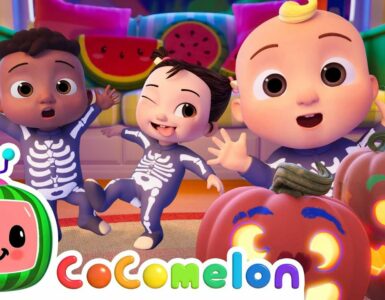Wheels on the Bus Fun Learning Nursery Rhyme & Kids Song is a timeless classic that resonates with children across generations. Its catchy melody and repetitive lyrics not only entertain but also provide an essential learning experience for young minds. As kids sing along, they engage in language development, motor skills, and social interaction, making this nursery rhyme a delightful gateway to education.
The Cultural Significance of Nursery Rhymes
Nursery rhymes have always played a significant role in children’s early literacy and cultural familiarity. They weave storytelling and rhythm into a format that captures the attention of young learners.
The Historical Origins of Nursery Rhymes
Nursery rhymes like “Wheels on the Bus” often have roots in historical narratives or social commentary.
These simple yet powerful songs have been passed down through generations, often evolving with cultural nuances. “Wheels on the Bus,” for example, emerged during a time when public transportation was becoming integral to urban life.
Originally introduced as a way to familiarize children with their environment, these songs often reflect societal norms and expectations. As children listen to “Wheels on the Bus,” they learn about community, travel, and social interaction, all topped with an engaging tune that sticks in their memory.
More: Wheels On The Ice Cream Truck Nursery Rhyme for Kids
Learning Through Rhythm and Rhyme
The rhythmic structure of nursery rhymes serves a dual purpose: it entertains and educates.
By incorporating rhythm and repetition, songs like “Wheels on the Bus” help improve a child’s phonemic awareness—the ability to hear, identify, and manipulate sounds. This skill is crucial for developing reading abilities later in life.
Additionally, the melodic nature of these songs makes them easier to remember. Children often find joy in singing along, which boosts their confidence and willingness to engage in language-based activities. The process of memorizing and reciting these lyrics can significantly enhance vocabulary and pronunciation.
The Role of Repetition in Learning
Repetition is a cornerstone of learning for young children.
In the case of “Wheels on the Bus,” each verse introduces different characters and actions, reinforcing language acquisition in a fun, memorable way. When children repeatedly hear phrases like “the wipers on the bus go swish, swish, swish,” they internalize the language patterns and begin to recognize similar structures in other contexts.
This method not only aids in cognitive development but also fosters emotional connections as children associate fun memories with learning experiences. Parents and educators can leverage this understanding by introducing a variety of nursery rhymes, ensuring that children are exposed to diverse vocabulary and concepts.
Engaging Children with Interactive Elements
One of the most appealing aspects of Wheels on the Bus Fun Learning Nursery Rhyme & Kids Song is its interactive nature. It’s not just a passive listening experience; it encourages children to participate actively.
Incorporating Actions and Movements
Encouraging children to mimic the actions described in the song adds a kinetic element to the learning experience.
Simple gestures like moving hands up and down for “the wipers” or pretending to steer a steering wheel while singing can make the activity more engaging. Not only does this promote physical activity, but it also enhances comprehension as children associate words with actions.
Moreover, integrating movement into the learning process strengthens neural pathways associated with memory. The combination of auditory learning (through singing) and kinesthetic learning (through action) engages multiple senses, solidifying the educational impact of the song.
Creating a Storytelling Atmosphere
Narrative structures captivate children’s imaginations.
Wheels on the Bus serves as an excellent backdrop for storytelling. Parents and teachers can encourage kids to create their own verses or scenarios based on the bus journey. For instance, children could be prompted to think about where the bus travels or introduce new characters like a dog, cat, or even a superhero.
This activity not only nurtures creativity but also promotes critical thinking as children consider how their changes affect the story’s flow. The musical format makes it easy for them to brainstorm ideas, ultimately leading to a richer understanding of storytelling elements.
Building Social Skills Through Group Activities
Group activities centered around this beloved nursery rhyme foster social interaction and teamwork among children.
Singing together reinforces a sense of community and belonging. Moreover, by taking turns to lead different sections of the song or performing actions collectively, kids learn valuable lessons about cooperation and respect for others.
Teachers can also facilitate group discussions by asking open-ended questions about the lyrics. For example, discussing what happens when a bus encounters obstacles can prompt conversations about empathy and problem-solving. Such interactions help develop critical social skills that will benefit children well beyond their early learning years.
Musical Education and Cognitive Development
Music has a profound impact on cognitive development, especially in early childhood. Wheels on the Bus Fun Learning Nursery Rhyme & Kids Song provides an outstanding example of how music can serve as a tool for intellectual growth.
The Science Behind Music and Brain Development
Research has shown that engaging with music activates multiple areas of the brain.
From enhancing memory and cognitive function to improving coordination and spatial-temporal skills, exposure to music can significantly influence a child’s overall development. The structure of songs like “Wheels on the Bus” helps children develop auditory discrimination—an essential skill for reading and language comprehension.
Moreover, the simple tunes and repetitive phrases make it easier for children to grasp linguistic concepts, setting a strong foundation for future learning. Children who engage with music regularly may find themselves better equipped to tackle complex subjects in school.
Fostering Emotional Intelligence Through Music
Songs often evoke emotions and help children articulate their feelings.
When children sing along to “Wheels on the Bus,” they express joy, excitement, or even frustration at times. Through this song, kids learn to identify and manage their emotions, paving the way for greater emotional intelligence.
Parents and educators can use the song as a springboard for discussions about feelings. Asking questions such as “How do you think the people on the bus feel?” can help children connect emotionally with the lyrics and understand varying perspectives. This approach nurtures empathy and equips children with tools for emotional regulation.
The Role of Musical Instruments in Learning
Incorporating musical instruments into the learning experience can elevate engagement levels.
Using simple percussion instruments like tambourines or maracas while singing “Wheels on the Bus” allows children to explore rhythm and sound production. This kind of hands-on interaction deepens their understanding of musical concepts while enhancing their fine motor skills.
Additionally, allowing children to experiment with creating their own sounds can spark curiosity and inspire creativity. Educators can encourage kids to come up with unique verses to the song, further nurturing their inventive spirit.
Implementing Technology in Teaching Nursery Rhymes
In today’s digital age, technology can enhance traditional nursery rhymes, making them even more accessible and engaging.
Digital Platforms for Rhythm and Rhyme
Numerous apps and websites provide interactive experiences related to nursery rhymes, including Wheels on the Bus.
These platforms often include animated videos, sing-along features, and interactive games, captivating children’s attention in ways that traditional methods might not. Such resources can be particularly beneficial for families who may not have the time or knowledge to teach nursery rhymes in a conventional manner.
Utilizing tech can make learning more fun while still achieving educational objectives. However, it’s crucial that parents and educators monitor screen time to ensure a balanced approach to learning.
Virtual Storytime Sessions
With the popularity of virtual learning, hosting online storytime sessions can bring nursery rhymes to life in a modern context.
Educators can use video conferencing tools to gather children for live singing sessions. Encouraging participation through actions and discussions can mirror the interactive nature of traditional classroom settings.
These virtual meetups not only allow for connection among peers but also provide a platform for sharing stories and experiences. Children can log in from various locations, fostering diversity and broadening their understanding of different cultures.
Utilizing Music Creation Software
For older children, introducing music creation software can be an exciting gateway into composing original songs.
Using basic digital tools, kids can layer sounds and experiment with melodies inspired by Wheels on the Bus. This creative exercise not only sharpens their musical skills but also encourages collaborative projects, where they can work together to produce a unique version of the song.
Teaching children how to use technology in music creation can ignite their passion for the arts and may even lead to lifelong interests in music, sound engineering, or performance.
Conclusion
In summation, Wheels on the Bus Fun Learning Nursery Rhyme & Kids Song is far more than just a catchy tune; it embodies a rich tapestry of educational opportunities for children. From promoting literacy and cognitive development to nurturing social skills and emotional intelligence, this timeless nursery rhyme holds immense value in early childhood learning.
As we continue to adapt our teaching methods to embrace both traditional and modern approaches, songs like “Wheels on the Bus” will remain a vital resource in shaping the next generation of learners. By leveraging the power of music and interactive engagement, we can create a joyful and enriching environment where children thrive academically and socially.

















